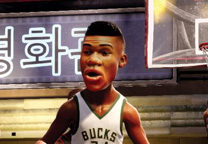All Diablo 4 Item Rarity Levels, Explained
Diablo 4 introduces a rich itemization system that includes multiple rarity tiers, each with its own mechanics, drop sources, and game-changing potential. Understanding how item rarity works - and how to make the most of each tier - is key to maximizing your power and customizing your build in both leveling and endgame play.
In this guide, we'll explore all of Diablo 4 Items rarities: Normal, Magic, Rare, Legendary, and Unique, breaking down what makes each of them special, where to find them, and how to use them effectively.
1. Overview of Item Rarity Levels
Diablo 4 features five main item rarities:
Common (White)
Magic (Blue)
Rare (Yellow)
Legendary (Orange)
Unique (Gold)
Each tier adds complexity and power over the last, influencing affix rolls, upgrade potential, and overall game impact.
2. Common Items (White)
Description:
Basic equipment with no magical affixes.
Acts as a placeholder item or salvage material early in the game.
Stats:
No affixes (e.g., "+ Strength", "+ Critical Chance").
Basic defense or attack values only.
Use Case:
Best used for salvaging at the blacksmith for crafting materials.
Sometimes needed for upgrading or imprinting via the Occultist.
Where to Find:
Dropped from all enemies, especially early-game mobs.
Common in chests and barrels.
Not Recommended:
Rarely worth using past level 10.
Should be salvaged or sold for gold to buy diablo 4 gear.
3. Magic Items (Blue)
Description:
The first real step up from common gear.
Contains 1-2 affixes, which can enhance specific stats like Strength, Willpower, or Resistances.
Stats:
Small stat boosts (e.g., +12 Dexterity, +3% Lightning Resistance).
Helps improve early character performance.
Use Case:
Good for early leveling or quick stat fixes.
Can be used as donor gear when upgrading or imprinting later.
Where to Find:
Dropped frequently in early zones.
Available from vendors and world events.
Pro Tip:
Extract early-useful affixes before salvaging if they're powerful (e.g., resource cost reduction).
4. Rare Items (Yellow)
Description:
Mid-tier gear with 3-4 affixes, often forming the foundation of your build during leveling and mid-game.
Rare items can be imbued with Legendary Aspects using the Occultist.
Stats:
Decent stat rolls across offensive, defensive, and utility categories.
Can roll high values for core stats (e.g., "+30% damage to crowd-controlled enemies").
Use Case:
Highly customizable - use rare items with desired affixes and imprint Legendary Aspects.
Ideal for builds that need a specific stat combination not found on random legendaries.
Where to Find:
Dropped from elites, chests, world bosses, and dungeons.
Found more frequently at higher World Tiers.
Crafting Tip:
Occultist can add a Legendary Aspect to a Rare item, effectively turning it into a Legendary with tailored stats.
5. Legendary Items (Orange)
Description:
High-tier items that combine strong base stats with a Legendary Aspect, a unique affix that modifies skills, gameplay mechanics, or build functions.
Legendary Aspects:
Unique modifiers that affect active/passive skills.
Example: "Casting Chain Lightning has a 30% chance to spawn a second Chain Lightning."
Stats:
4-5 affixes including the Legendary Aspect.
Aspect power and affix quality vary based on item level and World Tier.
Use Case:
Central to endgame builds.
Extractable aspects can be used on better rare items (with ideal affixes).
Where to Find:
Drops from elites, dungeon bosses, world events, Helltides, and Nightmare Dungeons.
Higher World Tiers increase drop rates and power scaling.
Important:
Aspects can be extracted and stored using the Occultist.
Aspects from the Codex of Power are weaker than naturally dropped ones but provide consistency.
Codex of Power:
Unlocked by completing specific dungeons.
Stores permanent access to predefined aspects for future imprinting.
6. Unique Items (Gold)
Description:
The highest tier of rarity with build-defining mechanics.
Unlike Legendary items, aspects on Uniques are fixed - they cannot be extracted or changed.
Often comes with a unique appearance and lore flavor text.
Stats:
4-5 affixes plus a powerful, exclusive Unique effect.
Some also roll higher baseline stats than Legendary items.
Use Case:
Best-in-slot for certain builds.
Foundational for build archetypes, such as the Sorcerer's "Raiment of the Infinite" or Druid's "Vasily's Prayer."
Where to Find:
Very rare drops in World Tier 3 (Nightmare) and Tier 4 (Torment).
World Bosses, Nightmare Dungeons, and Uber bosses (e.g., Duriel) have higher chances.
Some Uber Uniques (like Harlequin Crest or Doombringer) are incredibly rare and only drop in Tier 4.
Limitations:
Aspects are not swappable or extractable.
May not synergize with all builds - some Unique items are build-specific.
7. Uber Unique Items (Ultra Rare)
Description:
Extremely rare and powerful Unique items that only drop in World Tier 4 and from specific endgame bosses.
These include items like:
Harlequin Crest ("Shako")
Andariel's Visage
The Grandfather
Use Case:
Best-in-slot for top-tier builds.
Often grant powerful bonuses across all stats or global effects.
Where to Find:
Uber Duriel, Uber Lilith, and other pinnacle bosses.
Some have a drop rate as low as 1 in 100,000.
Warning:
Trading is often the only way to acquire them unless you farm relentlessly.
8. Sacred and Ancestral Items
Along with rarity, Diablo 4 introduces item power tiers tied to World Tiers:
Sacred Items: Drop in World Tier 3 (Nightmare). Stronger than normal.
Ancestral Items: Drop in World Tier 4 (Torment). Highest item power, capable of rolling the strongest affixes.
Stats:
Higher affix ceilings.
Enables higher DPS and defense scaling.
Best for endgame min-maxing.
Why It Matters:
Legendary and Unique items can be Sacred or Ancestral, meaning even if you have the "right" item, you'll want to farm for a higher-tier version in late-game.
9. How to Upgrade and Enhance Gear
Understanding item rarity helps with crafting, too:
Blacksmith: Upgrade gear to increase Item Power.
Jeweler: Add sockets or upgrade gems.
Occultist: Extract or imprint Legendary Aspects.
Enchanting: Reroll individual affixes for perfect stats.
10. What Should You Keep, Salvage, or Sell?
Keep:
High-roll Rare gear with ideal affix combinations.
Any Legendary or Unique items - even bad rolls are worth storing.
Rare crafting mats like Forgotten Souls and Fiend Roses.
Salvage:
Unused Magic and Common items.
Legendary items if the Aspect is worth extracting.
Sell:
Magic and Rare gear with poor stats.
Extra gems and upgrade materials (if trade is enabled in future seasons).
Conclusion
Item rarity in Diablo 4 isn't just about color - it's about power, flexibility, and build potential. From humble white gear to god-tier Uber Uniques, each step up the item ladder offers players a new layer of depth and decision-making. Whether you're crafting the perfect gear, chasing a high-roll Unique, or imprinting Aspects to fine-tune your build, knowing how rarity works gives you the edge you need to survive and thrive in Sanctuary.
So, gear up, farm smart, and may the loot gods bless your next drop!



